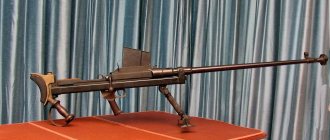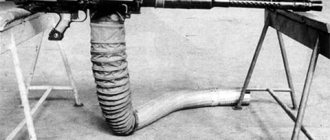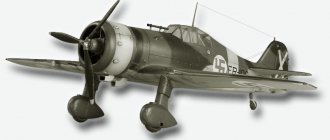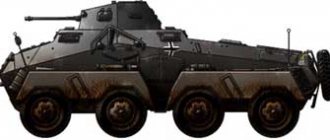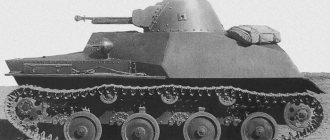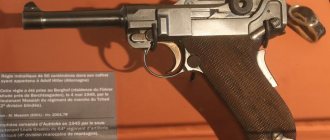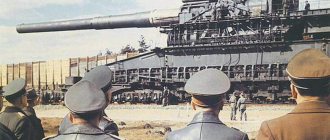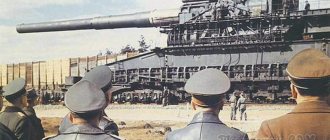In October 1973, the largest and most merciless tank battle since World War II took place on the Sinai Peninsula. The Battle of China Farm was part of the Yom Kippur War between Israel and Egypt and truly lived up to the campaign's name. 60 hours of continuous fighting, hundreds of burned tanks, thousands of dead - all this on a piece of scorched desert with an area of 20 square kilometers - a real Armageddon. And you can find yourself in the middle of this bloody adventure yourself, thanks to a new scenario in War Thunder, taking the side of Israel or Egypt in a grandiose clash of Soviet and American armored vehicles.
Disgusting Men, with the support of War Thunder, talks about the most brutal tank battle in modern history.
Yom Kippur War
Egyptian T-55 tanks (Soviet production).
The workhorse of the Egyptian army. In 1973, Israel was much larger than it is now. At that time, he owned the Sinai Peninsula - a huge piece of barren land, conquered in 1967, during the Six-Day War. But this territory was strategically important, and Egypt perceived its loss as a national insult. For the new Egyptian President Anwar Sadat, the return of Sinai was perhaps his main election promise. And, looking ahead, it must be said that he succeeded, albeit in a paradoxical way - by losing the Yom Kippur War, which he himself started.
Anwar Sadat
Just five years earlier, in 1967, Israel had defeated the Arab coalition with stunning (at least according to the world community) ease. Having destroyed the enemy air force and suppressed air defenses, the IDF quickly dealt with the poorly organized Egyptian army. Egypt was humiliated, and the Israeli government believed that it had won years of peace for itself - after such a defeat it was almost impossible to recover. However, Egypt, especially with the arrival of Anwar Sadat, began preparing for revenge. Five years of modernization, drill and reform made his army much more efficient. In the Yom Kippur War, the Israelis were met not by a chaotic mob, but by a well-organized war machine.
The border between Israel and Egypt ran along the Suez Canal, and the Egyptians brilliantly planned an attack through this barrier. On their side, they set up a powerful protective line of air defense and missile launchers, which covered the Israeli coast for many kilometers. Under this “umbrella,” the Egyptian troops that crossed the Suez Canal could not be afraid of Israeli aviation and received serious fire support. But, as further developments showed, luck was not on the side of the Egyptians outside of missile defense.
Crossing the Suez Canal.
The Yom Kippur War began on October 6, 1973, as Israel celebrated one of its most important religious holidays, Yom Kippur, the Day of Atonement, from which the campaign took its name. Egyptian rocket launchers destroyed the artillery and tanks stationed on the Israeli side, and the army began a rapid crossing of the canal. At this time, the Air Force bombed Israeli airfields (the Soviet TU-16 missile carriers were especially useful in this), and the air defense completed the massacre - as a result, in the first two days of the war, Israel lost a third of all aviation. In addition, the Egyptians used innovative tactics: with the help of powerful water cannons purchased abroad, their engineers were able to quickly destroy Israeli sand fortifications. The path to Sinai was open, the IDF suffered huge losses.
Syrian T-62 tank (Soviet production) during the Yom Kippur War.
But that was only half the story - at the same time, Egypt’s ally, Syria, also launched a massive attack on Israeli fortifications. The Golan Heights in the northeast of the country became the site of fierce fighting. However, the Syrians planned their operation much worse - their attack quickly fizzled out, and they themselves were forced to go on the defensive, fearing an Israeli forced march to Damascus.
Battle process
The German army, having been defeated on July 5, 1943, transferred the bulk of its forces to the south-eastern direction, continuing its attempts to capture Kursk from Prokhorovka. To achieve the goal, on the very first day of the battle she introduced almost 700 units of equipment. This number included not only tanks. They were supported by assault guns and aircraft.
The Soviet side responded with an equally impressive blow. Anticipating the enemy's actions, the vulnerable side was reinforced in time by 2 tank corps, the 45th Guards Army and the 5th Tank Army . But their weapons had their weak points.
For example, the radius of influence of the T-34, whose diameter did not exceed 76 mm, fluctuated within 800 meters, which was an impressive achievement compared to other tanks, the affected area of which was much smaller. German tanks, having 88 mm guns, hit Soviet equipment from a distance of 2 thousand meters. In this regard, they could show class, which their opponents could not boast of. The Soviet army was aware of this shortcoming of its guns, so it broke through closer to the German forces.
The historical event took place on the 12th. A total of 1,200 tanks and other weapons came from both sides. The German and Soviet armies suffered heavy losses. According to calculations, out of 400 tanks involved in the battle, the Germans lost about 300 units, the Russians and Ukrainians lost 500 burned tanks out of 800 that took part.
It follows from this that the German army found itself in a no-win situation. The balance of power was not in their favor. On the 16th the Germans had to retreat. The Soviet side won.
Israeli counterattack
Israeli soldiers on a British Centurion tank.
As already mentioned, until October 9, the Egyptian army performed brilliantly. While the Syrians distracted significant IDF forces, the Egyptians captured the entire eastern bank of the Suez Canal and began to move deeper into the country. But after the perfectly successful landing, it turned out that Egypt’s further plans were vague and chaotic, and after the strategic triumph, pure improvisation began. The entire army was almost evenly spread out along a long front, instead of gathering two or three massive “fists”, striking them at the Israeli units. Coming out from under the “umbrella”, the Egyptians began to suffer losses from aircraft, and soon faced a fierce counterattack.
Israeli tank "Magah 3" (modified American M48).
In addition to the unexpected attack and good preparation, Egypt prepared another surprise for the Israelis - Soviet Malyutka anti-tank missiles. Mobile installations with these missiles turned out to be a real nightmare for Israeli armored vehicles. They work like this: the operator launches the rocket and then controls its flight using a joystick, as if in a video game. True, these were first-generation samples, so the signal came through a cord. Having left the installation, the rocket dragged a wire behind it - this may seem primitive, but in the Yom Kippur War the “Little Ones” performed amazingly. However, in the counterattack that began, the Egyptian army managed to miss this advantage.
ATGM "Malyutka".
It must be understood that Israel, since 1967, has also not sat idly by and been preparing for a possible war. True, almost all of the country's exercises were aimed at attack. During this time, 27 exercises were conducted on the border with Egypt in an attack scenario and only 1 in a defense scenario. On the Syrian front, in general, all exercises were aimed exclusively at attack. So even when they themselves were under attack, the Israelis decided that the best defense was to attack, which is what they do best. In addition, the Israeli command understood that the longer the war dragged on, the less chance it had of winning.
Consequences of being hit by the Malyutka. Yom Kippur War.
Israeli tanks stopped the advance of the Egyptian army using simple but effective tactics. They stood on the dunes so that only the barrel and a small part of the turret rose from behind the hill, and then shot at suitable enemy equipment as if in a shooting range. This made it possible to hide not only from enemy tanks, but also from the “Baby” tanks, on which the Egyptians relied. At this time, Israeli air defense was protected by tanks hidden in the dunes from Egyptian aircraft. The initiative began to shift to Israel's side. Starting from October 9, both armies spent a significant part of the war in endless attacks and counterattacks, butting heads in one place.
Abandoned Syrian T-55.
It was at this time that the Israeli command developed Operation Abirei-Lev ("Undaunted"), which helped win the war and led to that very grandiose battle for the "Chinese Farm".
Opinion of German generals
700 Soviet combat vehicles took part in the Battle of Stalingrad . On the morning of July 12, we managed to knock out 270 enemy tanks. According to some assumptions, there were more cars, but for unknown reasons they fell behind during the march.
Romistrov wanted to break through the front and direct his forces to Kharkov. All his actions and plans were reflected in the armament of the army, which consisted of lighter tanks designed for long distances. The German forces, located at that moment near Prokhorovka, were fighting off aviation, and therefore were also not prepared for a tank clash. The meeting of the two armies was unexpected for both sides.
Rotmistrov's tanks moved at a noticeable angle, involuntarily adhering to the opposite direction, leading to the German base. This situation was beneficial to the Germans, who were the first to notice the enemy and managed to prepare for battle. Light and not particularly armed tanks carried out the task of distracting Rotmistrov, attacking his army from the flank. While the Soviet tankers were rushing about, building their strategy, stronger German vehicles attacked them from the other side.
Operation Undaunted
The Battle for the “Chinese Farm” - a map of the area according to the War Thunder version.
Back on October 10, the tank brigade of Israeli Colonel Amnon Reshef found out that there was a gap between the 2nd and 3rd Egyptian armies, at the place where the Suez Canal meets Bitter Lake. Reconnaissance in force made it clear that the “emptiness” was quite large - a tank column could easily pass through it without being noticed. It was decided to use this fact for a counterattack. The operation was called “Dauntless” and was, in fact, a desperate military adventure. However, it worked and allowed Israel to win the war.
The plan of the operation was as follows: drive an entire army through the gap, build a crossing across the Suez Canal, land on the opposite bank and go behind enemy lines. At the same time, it was intended to encircle the 3rd Egyptian Army and deprive it of supplies, forcing it to surrender. Looks like complete madness.
Israeli "Magah 6" (modified American M60-1).
The implementation of the plan was delayed until October 15. On the opposite bank there was still a huge amount of Egyptian equipment - up to 900 tanks, which had not yet been transferred to Sinai. Moreover, they were concentrated exactly where the Israelis planned to cross the canal. During this time, the plan acquired new details: it became clear that the gap needed to be expanded by force, and then protracted battles should be imposed on the Egyptians - so that during this time as many soldiers and equipment as possible would have time to cross to the west bank. First of all, for this it was necessary to capture and hold the so-called “Chinese Farm” - an abandoned experimental farm, which received its nickname due to the fact that Japanese agricultural technicians once worked on it. On the doors and hangars of the farm one could see hieroglyphs that Israeli soldiers mistook for Chinese.
Why was she so important to the operation? Firstly, the farm covered the place where Ariel Sharon's 143rd Division was to seize a bridgehead in order to begin crossing the canal. Secondly, it turned out that the pontoon bridge needed for the crossing could be pulled without problems only through the area of irrigation ditches. Thirdly, to the south of the farm there was the Akavish highway (from Hebrew - “spider”), which passed through the gap between the Egyptian armies and went from the Israeli rear straight to the crossing point. In other words, the “Chinese Farm” was vital for protecting the bridgehead of Sharon’s division, and for building a bridge, and for bringing reinforcements to the crossing (they became Abraham Adan’s division).
Defeat of German forces
July 12, 1943 - a turning point in the Battle of Kursk. It was then that the Western and Bryansk fronts of the Soviet army hit the enemy troops, and on the 15th the Central Front joined them. On August 5, soldiers of the Bryansk Front liberated the territory of Oryol from German occupation. By the end of the day, the forces of the Steppe Front recaptured Belgorod without succumbing to the enemy’s onslaught.
On the evening of August 5, Moscow staged an artillery salute for the first time, honoring the memory of fallen soldiers and paying tribute to those who were able to liberate the cities. A little later, on August 23, the Steppe Front, with the help of Voronezh and Southwestern forces, liberated the Kharkov region.
The German and Soviet sides paid dearly for all the events that took place during the Battle of Kursk. According to official information, the losses of the Soviet army amounted to 863,303 soldiers, of which 254,470 were missing. Of the technical resources, 6,064 tanks, 1,626 military aircraft and 5,244 infantry equipment, which included mortars, had to be sacrificed. As for German losses, nothing is known on this score. Soviet researchers, based on all available data, made approximate calculations:
- 500 thousand soldiers;
- 1.5 thousand tanks;
- 400 aircraft;
- 3 thousand artillery equipment.
Among the dead were many German specialists who at one time received well-deserved recognition of their outstanding abilities. For example, it is enough to recall the 9 cavaliers who are classified as Knight's Crosses.
The Battle of Stalingrad turned out to be a turning point, after which the German army lost its leadership position in the events of the Second World War. Subsequently, they tried to regain their strategic advantage, but, having underestimated the role of tanks in the Great Patriotic War, they suffered a crushing defeat.
Battle for the "Chinese Farm"
In a sense, the Battle of China Farm began because of an intelligence error. In the Yom Kippur War, the IDF used ultra-modern American reconnaissance aircraft SR-71, known as “Blackbirds”. They performed admirably, warning of an Egyptian counterattack on October 14 and thereby deciding the outcome of another fierce tank battle, the Battle of Sinai. However, in the case of the “Chinese Farm,” aerial reconnaissance was not so effective: according to its data, there were about 150 tanks in the area, but it was allegedly not well fortified, which is why for a long time the Israeli command refused to believe in the existence of two enemy divisions in district. This miscalculation cost the IDF 450 killed and 1,200 wounded.
To secure the path to the crossing, it was necessary to complete two tasks: to capture the “Chinese Farm” and, at the same time, clear the territory along the Akavish highway. In both cases, Israeli troops moved almost at random. It was not always clear where and who to attack and what to prepare for. The main blow was taken by the 14th tank brigade of Amnon Reshef and the 35th airborne brigade of Colonel Uzi Yairi. However, they preferred to forget about the participation of the paratroopers after the war - one of the most shameful miscalculations of the Israeli command in that war was associated with them.
Colonel Reshef.
The battle for the "Chinese Farm" began on October 15 at 16.00. Reshef's battalion advanced to meet the Egyptian troops. His mission was to quickly occupy the farm and neutralize the fortified hill, which was codenamed "Missouri" on Israeli maps. In reality, the battle dragged on for 60 hours of almost continuous fighting. By this time, the Israeli military had already realized that the “Little Ones” were effective only at a distance of more than 500 meters, and with sunset they became completely useless. So the night tank battle wasn't all that crazy, although both sides eventually just lost track of what was going on and it turned into a chaotic massacre.
Reshef himself says that the ground shook from the shots like an earthquake, and Egyptian tanks rushed into a counterattack like a tsunami. The battle was so chaotic that the Israelis often mistook enemy tanks for their own and, realizing the mistake only at the last moment, began firing at point-blank range. “Fire, darkness and blood. A real hell,” Reshef describes that night.
This is what tank platoon commander Lieutenant Noam Yafe says about that night: “We set out without minimal instructions. The first contact with the enemy was at a distance of 2500-3000 meters. We approached 200-300 meters. We were in a completely open area and attacked like cavalry, without any artillery cover.”
It is curious that it was not only Yafe who had associations with an unsuccessful cavalry attack. As the tank platoon commander, Lieutenant Uri Dinur, recalls: “The Egyptian infantry gave us a hard time. They floundered in the Six Day War, but the Chinese Farm had infantry that knew what they were doing. We looked very bad. We were advancing along a slope, the tanks were moving close together, and there was poor visibility. This was reminiscent of the Polish cavalry attacking German machine guns during World War II. It turned out that we had learned nothing during the War of Attrition. We couldn't even tickle them. We fought according to the rules of the “sabbath” tank battle, when tanks go against tanks, but in this case it was absolutely inappropriate.”
At dawn on October 16, Amnon Reshef climbed the hill and surveyed the scene of the night's battle. The desert was covered with hundreds of charred or still smoking tanks, trucks, guns and armored personnel carriers. Dead soldiers lay everywhere. The picture looked like a surreal museum of military equipment: mobile homes for commanders, mobile garages, anti-aircraft installations, huge transporters with missiles, radar installations, and field kitchens were left burning out on the field. Many Israeli tanks were burning a couple of meters from the Egyptian ones.
Things went even worse for the paratroopers. They were tasked with clearing the road from “tank hunters” - saboteurs who were allegedly entrenched along the Akavish. However, instead of a couple of hundred grenade launchers, Israeli paratroopers encountered a well-armed Egyptian infantry division, but realized this too late.
An eyewitness to those events, Yaakov Kedmi, says: “We were ordered to rescue Itzik Mordechai’s battalion. Ehud said that Itzik was in trouble and we were ordered to pull him out from under the fire. I called the brigade's intelligence department. They didn't know anything there. Ehud said Itzik was trying to scour the area for tank hunters. I asked: “Who even came up with the idea that they were here, these tank hunters?” The Germans had such hunters during World War II. But the Egyptian anti-tank defense system, which I knew well, did not involve any tank hunters. It was the invention of a man who had no idea what was really going on. We did not receive any real instructions: who is in command of the battle from headquarters, to whom we report, to whom we report, who is covering us. There was a front headquarters, a division headquarters, a brigade headquarters, and none of them functioned. There was a complete command vacuum."
Mordechai's battalion was caught in the crossfire and suffered horrific casualties. However, his troubles did not end there. Many wounded soldiers remained on the battlefield; battalion commander Ehud Barak volunteered to save them. Having promised management to do this immediately, he, in fact, waited all night and part of the day. Instead of completing the task given to him, he tried to take the fortified heights by storm using armored personnel carriers. This senseless adventure almost cost the lives of all his fighters. In daylight, the Egyptians successfully used the “Baby” - as a result, many wounded paratroopers could not be saved, and they were also supplemented by the wounded from Barak’s battalion. The irony is that after the Yom Kippur War, Ehud Barak rose well through the ranks, and then rose to the rank of chief of military staff and prime minister.
Ehud Barak.
While Mordechai's paratroopers diverted the attention of the superior enemy forces, things began to improve for Reshef, largely due to amazing luck. At the very beginning of the battle, the colonel made the defending Egyptians nervous by rushing straight to the headquarters of the 16th Infantry Division. Moreover, it happened by accident - the Israeli tank crews seemed to burst in from the “back door”, no one even understood how it all happened. The Egyptians were seized with panic, they began to fire in all directions, their morale was undermined.
At some point the Egyptians simply gave up. The endless battle had exhausted their strength, and the two counterattacks they had mounted had failed. The rest of the Egyptian army was busy in the Battle of Sinai, so the Egyptian generals chose to transfer troops to what they considered to be more important areas. In addition, the 25th Tank Brigade, sent to help Egyptian soldiers from the “Chinese Farm,” was ambushed and almost completely destroyed (according to some reports, it lost 86 out of 96 tanks). Thanks to this, the IDF was able to create a twofold superiority in armored vehicles in the area (440 tanks versus 232) and thereby decide the outcome of the battle.
On October 18, the Egyptians abandoned the "Chinese Farm" and the Missouri fortification. They did this even despite the fact that the crossing of the Suez Canal by Israeli troops began on October 16 and, in general, it had long been clear why they needed this area and the safety of the Akawish road. Anwar Sadat himself said that the entire operation with the Israeli crossing of the canal was simply “posing for international television cameras.” But it was thanks to this reckless maneuver that Israel was able to win the war.
Israeli Defense Minister Moshe Dayan (left).
On October 18, Israeli Minister of Military Affairs Moshe Dayan arrived at the site of the battle for the “Chinese Farm”. What he saw amazed him so much that he described it in his autobiography: “I saw everything in the war, but I had never seen such horrors. Not on the battlefield, not in pictures, not in movies. It is a continuous field of death, stretching as far as the eye can see.”
The result of the German occupation of Orel
Before all the events that took place, the city population numbered about 114 thousand inhabitants. Later, 30 thousand people remained. Without calculations, it becomes clear that the Germans destroyed most of the population . But if you believe the recollections of eyewitnesses, the truth is different. Some of the victims were sent alive to Germany, and those who managed to escape joined the ranks of the partisans who settled in the forests on the territory of Orel and Bryansk.
In one of the city squares, soldiers of the first Soviet tank that broke through to the territory of Orel are buried. Next to them lies the no less famous General Gurtiev, who influenced the course of the Battle of Stalingrad. A little later, a monument was erected on his grave.
